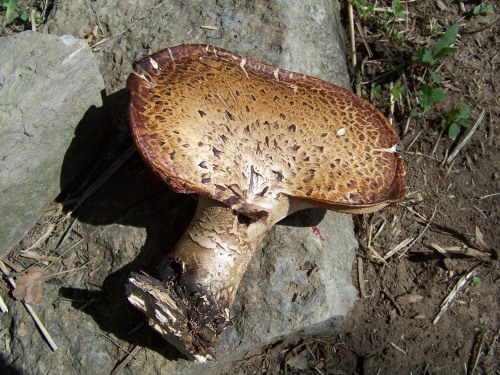
Near the barn door, a large tree stump is decorated with an impressive bracket fungus called Dryad’s Saddle (Polyporus squamosus). Dryad’s Saddle fruits in the spring and fall on hardwood stumps and logs, or living trees, and is widespread and common. Bracket fungi are excellent wood rotters and play an important role in breaking down woody debris.

The fruitbodies are kidney-shaped or round, and can be quite large. The background colour is yellowish to tan, with an interesting pattern of dark brown flattened scales. While most fungi turn to mush within a few days of fruiting, bracket fungi can persist for longer periods, in some cases even through winter, as the fleshy fruitbodies become touch and rigid.

In bracket fungi, the spores are produced in tubes that open by pores on the underside of the fruitbody. Because of this, these fungi are sometimes called polypores. The tubes can be shallow or more than a centimeter deep. Inside the fruitbody, there are thin-walled hyphae, or filaments for the transport of nutrients and the production of spores. Most bracket fungi contain thick-walled dead hyphae as well that give the fruitbody its rigid toughness. Dryad’s Saddle fungi can have a short stalk.
